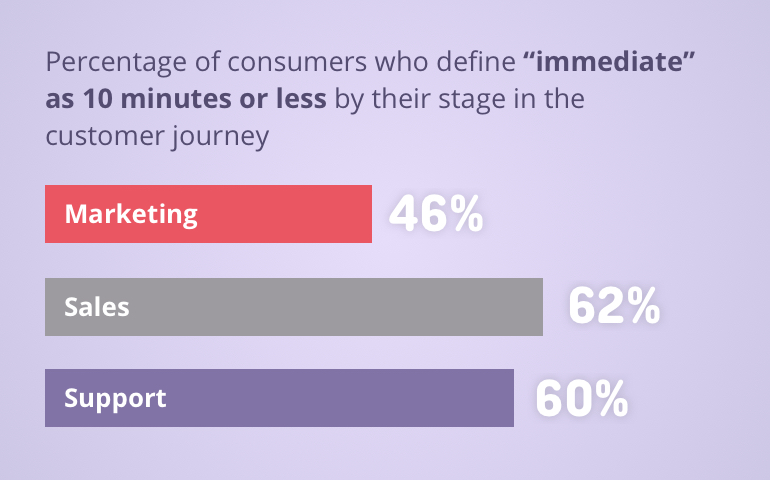“Start small and dream big.” – Rober T. Kiyosaki
That’s the mantra of many businesses nowadays. Just in Europe, 99% of all businesses are small to medium-sized businesses. In the United States, small businesses employ over 58 million people. Even though small businesses are huge drivers of the global economy, the sad truth is that only around 40% live to see the five-year mark.
If you’re a small business owner, you are facing the same challenges as any other business: economic crises, finding customers, hiring and keeping the right people, adapting to new technology and so on. But on top of those, the size of the team alone comes with a whole set of unique challenges.
What are they and how can your small business tackle them to reach the greatness of which you are dreaming?
Someone leaving can be a huge blow to the team
When your team is only a few people, any absences can cause a real headache. Whether your co-worker is taking a sick day, is spending two weeks in Bali or has resigned, the lack of workforce can leave a big hole.

Small teams are more vulnerable to changes because there’s a greater chance that they function in one of the two modes:
- everyone wears multiple hats and are spread a bit thinner, or
- each member is a specialized expert and therefore hard to replace.
In both cases, when an employee leaves, the team suffers: either from the departure of a specific set of skills and knowledge or because of an increased workload before you manage to replace the person.
Smaller teams also tend to be more close-knit, even more so in the case in family enterprises. Because of that, the emotional effects of someone resigning are just as important as the operational ones. 70% of employees in a survey by Officevibe have said that friends at work are the most crucial element to a happy working life, so if those friends leave, this can affect workplace satisfaction and productivity.
How can you address this challenge?
- Invest time in managing organizational knowledge. Organizational knowledge consists of multiple components and types of knowledge, and it’s crucial to smooth transitions when you change team members. Knowledge management is a long-term process during which you can implement multiple strategies, some of which are very thoroughly described in this article.
- Document processes. Writing the documentation will require some of your time, but it will pay off in the long run. There’s no need to invent a whole new method – follow these ten steps to process documentation and use one of the diagram templates.
- Improve training and onboarding new team members. You can try assigning mentors, introducing job shadowing, or share the knowledge with the help of Loop Email – include them in team channels and provide them with all the information they need in one place. Many small businesses are already loving our collaboration hub.
Taking over tasks without communicating it spells disaster
Who doesn’t love a proactive team member? In small teams, where people are juggling multiple roles, stepping up and finishing the task is highly valued. The problem begins when everyone is having a go at everything without communicating and when there’s no assigned responsibility for tasks.

Unmanaged proactivity can hurt your business in many ways:
- A drop in quality. The person taking on a task is not necessarily the best (fastest, savviest, the best informed) person for the job.
- Time-wasting. If two colleagues both decide to do the same task and don’t notify each other, the complete waste of time is obvious.
- Poorly informed decisions. The intentions might be good, but if employees make decisions while lacking the big picture, they can make the wrong ones and possibly waste time or (worse) hurt the business.
- Communication blunders. If your two sales reps send two different emails to a single client without knowing what each is doing, your company can appear chaotic and incompetent.
- Nobody’s jobs. It might seem counterintuitive, but unfinished projects and ignored tasks are common. “I thought Sally was canceling the delivery!” is not a surprise when the team is running on assumptions.
How can you deal with this challenge?
- Use project management tools. Even small teams need a type of project management. However, it’s not necessarily a software solution (although you can try out some good ones and see if they work for you). Something as simple as a whiteboard in the office or a spreadsheet shared with all team members can do wonders for your organization.
- Create communication flows. Our suggestion: introduce chat messaging to your business. It’s faster than exchanging emails (and we’re all messaging these days), enabling them to check on their co-workers faster. Loop Email offers a great solution: you can chat inside your email inbox easily while also including your teammates in conversations around emails. That way, everyone can see if someone has already taken on a task of replying that client.
- Point them in the right direction. Direct proactivity by informing your team members about
Slow responses can hurt your business
Gathering all the necessary information for the customer can take up a lot of your time. Your team has got limited resources and some days can be especially chaotic. While your team is tending to a contract with the supplier, handling the launch of a new service and trying to fit in that meeting with the accountant, sometimes customers response times start to suffer.
The uncomfortable truth is that customers, used to the digital space of 2019, expect speedy replies. In the increasingly competitive world, slow responses can hinder your success.

Our tips for improving response times:
- Let clients find the answer by themselves. As almost everyone has access to the internet in their pocket, many people prefer searching for an answer rather than making a call. If it makes sense for your line of business, you can make their search easier and write an FAQ section for your website where you publish the answers to most common questions.
- Prepare canned responses. Your co-workers (whether they are in the customer service department or not) can have those handy and reply to any simple queries faster.
- Don’t wait to get all the info to reply to a customer. Reply quickly, even if it’s to say that you’re still waiting for some info. Clients usually don’t mind the wait if you assure them that someone is handling their request.
- Consider implementing a customer service software.

- Loop-in your colleagues. You can include your entire team in a side-chat about the client’s email, and people can jump in when you’re not available to deal with the client request. It also makes gathering information faster – you don’t have to write emails with long explanations. Simply add relevant people to your side-chat and let them provide you with the information.
Overcoming micromanagement
Scaling your growing business nothing short of an art form. During this process, the roles often overlap, and project managers find themselves in a tricky situation – they often have no one to delegate the workload to and have to do it themselves. This habit can stick to them even once the team grows and some project managers find it difficult to let go of their responsibilities. As a result, they fall into the trap of micromanaging when they should be focusing on their work.
Project managers that find this transition especially hard are the people who founded the business. Even with an increased number of employees, business owners on average put in much twice as many hours than employees, while they get less done.
The dangers of micromanagement are real.
- Micromanagement can burn you out easily because it makes it easier to lose perspective and waste time on things that aren’t the priority.
- Hovering over your team members and correcting every single thing leads to a loss of trust and can seriously hurt your relationship with them – even in ways that can lead to resignations.
- Your team can start depending on you too much, rather than developing the confidence to perform on their own. They might start requiring constant guidance.
- If one person (in this case the micromanager) makes all the decisions, it’s almost impossible to generate new ideas and improve the business.

Our tips for letting go:
- Start with yourself. According to the Harvard Business Review, micromanaging can stem from feelings of disconnect, insecurity or the desire to stay in the familiar operational environment. Take a hard look in the mirror or ask an outsider for an opinion. Once you understand the cause of your behavior, make it a habit of asking yourself: “What kind of excuses am I using for micromanaging?” and “What are the important reasons why I should not micromanage?”
- Focus your time on the tasks that only you can do. If you’re finding it hard to decide which tasks you are comfortable letting go, try tracking them for a month. Time tracking tools will help you understand how much time some tasks take out of your schedule and prioritize them. We bet you’ll be surprised at the outcome!
- Learn how to delegate. Once you know which tasks you can delegate it’s down to the question of how. It might be a learning curve for you
- Manage expectations, not tasks. Clearly and frequently articulate the outcomes the for which your company strives. Once your team is in sync, there will be little need for micromanaging.
- Create transparency in project management. Keep overview with the help of Loops, so you know what’s up but try to stay uninvolved unless it’s urgent.
Low motivation and negativity spread faster than in larger teams.
The emotions people bring to the team are as important as their skills – in fact, they are so important that experts coined the term positive intelligence to describe it. In teams and workplaces, emotions undoubtedly spread due to the phenomenon called emotional contagion. In small teams, the shifts in moods are even more noticeable, because people usually work closer together. Often, it’s the leaders and bosses who dictate the mood, but emotions can travel in all directions. Because of that, small businesses are especially susceptible to the dangers the wildfires of negativity can bring: a drop in motivation and productivity, increased turnover of employees are all bad for the enterprise and the team.

How can you encourage positivity in the workplace?
- Lead by example. Keep your emotions in check in any given moment. You can’t change something you’re not aware of. Address your feelings and work on them.
- Don’t fake it! Allow a healthy balance of positive and negative emotions – forcing everyone to don a fake smile will only cause more frowns and will hurt your team in the long run.
- Talk with that “Negative Nancy.” If you see that a certain person is constantly spreading negativity, discuss it with them. There’s a chance they don’t know how negatively they are perceived or of the effect they have on other people.
- Allow time for fun. Let people decide what they want to do during their breaks and encourage them by providing the necessary equipment or tools – yes, we’re thinking a ping-pong table or a communal viewing of the big sports event.
These are just a few of the many business challenges teams in small businesses are facing daily. Are you wondering how other small businesses and teams have conquered them? We’ve done the work for you! We prepared a FREE webinar The secret of high performing teams – watch it and learn from the best.

Are you eager to learn more about effective teamwork and some practical, hands-on solutions for improving the way your team operates? With the help of this article that covers 24 hacks for effective teamwork, you can start implementing easy and proven improvements to your business today.
















Add comment